by Frank | Jun 25, 2014 | branding, thoughts
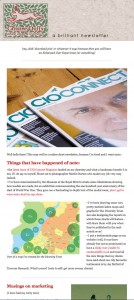 Newsletters – whether of the almost-dodo-like paper kind or the increasingly-popular email kind – are a great way of keeping in touch with your customers – potential or current. If you’re selling a high-value product or service they give people an opportunity to get to know you and your work before committing to buy, and you can share exclusive offers, and news about exciting new services, with people who are already interested in your stuff.
Newsletters – whether of the almost-dodo-like paper kind or the increasingly-popular email kind – are a great way of keeping in touch with your customers – potential or current. If you’re selling a high-value product or service they give people an opportunity to get to know you and your work before committing to buy, and you can share exclusive offers, and news about exciting new services, with people who are already interested in your stuff.
However, if you make a bad impression you can really put people off your business. Here are six things I’ve seen people do that are pretty much the marketing equivalent of approaching someone you fancy while sporting nothing more than ugg boots, bad breath and a lime-green mankini. Some are design-related and some are more general. Read on!
1) Send people a newsletter without their permission

mmm…”mechanically-separated chicken”
This is basically spam, and how do we feel about spammers dear boys, girls and those who identify as neither? I make a note of anyone who does this to me and vow never to buy from them. I usually send them a curt email telling them that I have vowed never to buy from them specifically because they have spammed me. Hate hate hate.
Instead, promote your newsletter in email signatures, on your website, on social media, and give people the opportunity to read previous examples before they sign up.
Perhaps offer something in exchange for an email sign up – I offer my 24-page “Guide to creating awesome briefs”.
Also, make it really easy for people to unsubscribe – and tell them you’ve done this before they sign up.
2) Email out the newsletter without using your email client’s “BCC” function

obligatory Star Trek facepalm image
so that the recipient can see everyone else who’s been sent this particular email and, if they’re particularly nefarious, harvest their contact details for their own egregious purposes. What’s really fun is when people “reply-all” to these mails, thus sinking the inboxes of all concerned into a mire of abject clusterfuckery. Ugh. Set up email groups and use the blind-copy address box to avoid this hell – basic stuff, I know, but some people still haven’t figured it out. Or just use MailChimp or Mad Mimi or another newsletter-creation service to avoid the risk of doing this accidentally altogether. Which leads me to…
3) Poor or non-existent HTML skills
If your newsletter design is ropey your clients will most likely think that you are too. If your coding is less fluent than your English then consider using Mad Mimi, MailChimp, or similar services, that will help you create an appropriate style for your audience. In my experience you’re also less likely to end up in people’s junk mail folders by using these, as compared with sending an email directly.
4) Not designed with the reader in mind
By this I actually mean two things:
a) not aimed at the audience
A communication from a purveyor of fine Swiss watches sending out mail with text in bright pink Comic Sans, for example. Either get a designer to help create a theme for you, or research your audience fully and observe how other companies marketing at the same sector produce their stuff. If you sell bridal wear have a look at bridal magazines and design similarly.
b) not designed in a way that makes someone actually want to read the damn thing
I’m thinking great big wodges of text. Reams and reams of times new roman – a glut of words impenetrable enough to embarrass Derrida – which only the most bored or the most desperately procrastinating can be bothered to tackle.
Break your text up:
- headings
- sub headings
- paragraph breaks
- pull-quotes, box-outs
- bullet-pointed lists
- photos
- gifs of kittens in sinks
All of these things draw the reader in, pique their interest and get them, well, reading.
Your writing style is obviously important, too. You need to be entertaining. I attempt to draw my readers in through swearing, poorly-thought-through metaphors and gifs of kittens in sinks but you might want to consider some sort of level of professionalism instead. Personally I save professionalism for the actual work I do – being my rather silly self in communications seems to elicit more positive responses than when I’m attempting to be polite or some such. Whatever works for you and your audience is the thing to do.
5) not sent out at the right frequency
For me, weekly newsletters are too much. It’s a bit like running into someone every other day that you don’t really know but aren’t quite friends with – gets pretty awkward rather quickly. Monthly is good and I’ll generally not unsubscribe from those. I did know of someone who created options for receiving different frequencies of newsletters – there was even a daily one, but you had to pay for that service! Also, creating a newsletter takes quite a bit of time – a few hours for me, generally – so don’t commit yourself to more work than you can realistically handle. Make it clear on your sign-up form how often you intend to infiltrate inboxes so people know what they’re getting into right from the start.
6) Poor choice of content
I get one newsletter that basically just features photos of new lines of vegan shoes and how much they are. Job done – perfect for what I want from them. Other newsletters I love to receive are long, rambling, beautifully-researched, written and illustrated affairs that require jasmine green tea in a bone-china cup and all of the use of my brain (highly recommended SIGN UP FOR NOREEN’S EMAILS THEY ARE SIMPLY DELIGHTFUL). I try to break things up by having:
a) an intro describing what’s in the newsletter
b) a brief paragraph about what I’ve been up to – work I’ve had printed, illustrations I’m half-way through, blog posts I’ve written
c) a longer piece about something design-wise I’ve been chewing over
d) (sometimes) the month’s special offer
e) things that have inspired me that month – art exhibitions, photos of snails etc
f) a little suggested activity to get your creative juices flowing
g) a brief look forward to goings on in the next month
I try to keep things short and sweet but you do what works for you, your audience, and the service you are selling.
Well, I think that’s everything I can think of right now. Most of the time I find it pretty fun writing my newsletter – it’s a wonderful way to talk about what I’m up to and how I can help people’s businesses without being to in-your-face and salesy. Hope this list was of some use – do let me know if you can think of any other bug-bears that you have with newsletters and verily I shall add them!
by Frank | Jun 23, 2014 | illustration
So I’ve been cooped up inside bored as hell on a Saturday with hay fever and I fell down a YouTube hole watching videos about hand lettering and I thought I’d share my favourites with you because I’m nice like that.
You may have seen some of the projects where I’ve used hand lettering, most recently this tattoo-style t-shirt design for Naturally Kind Foods
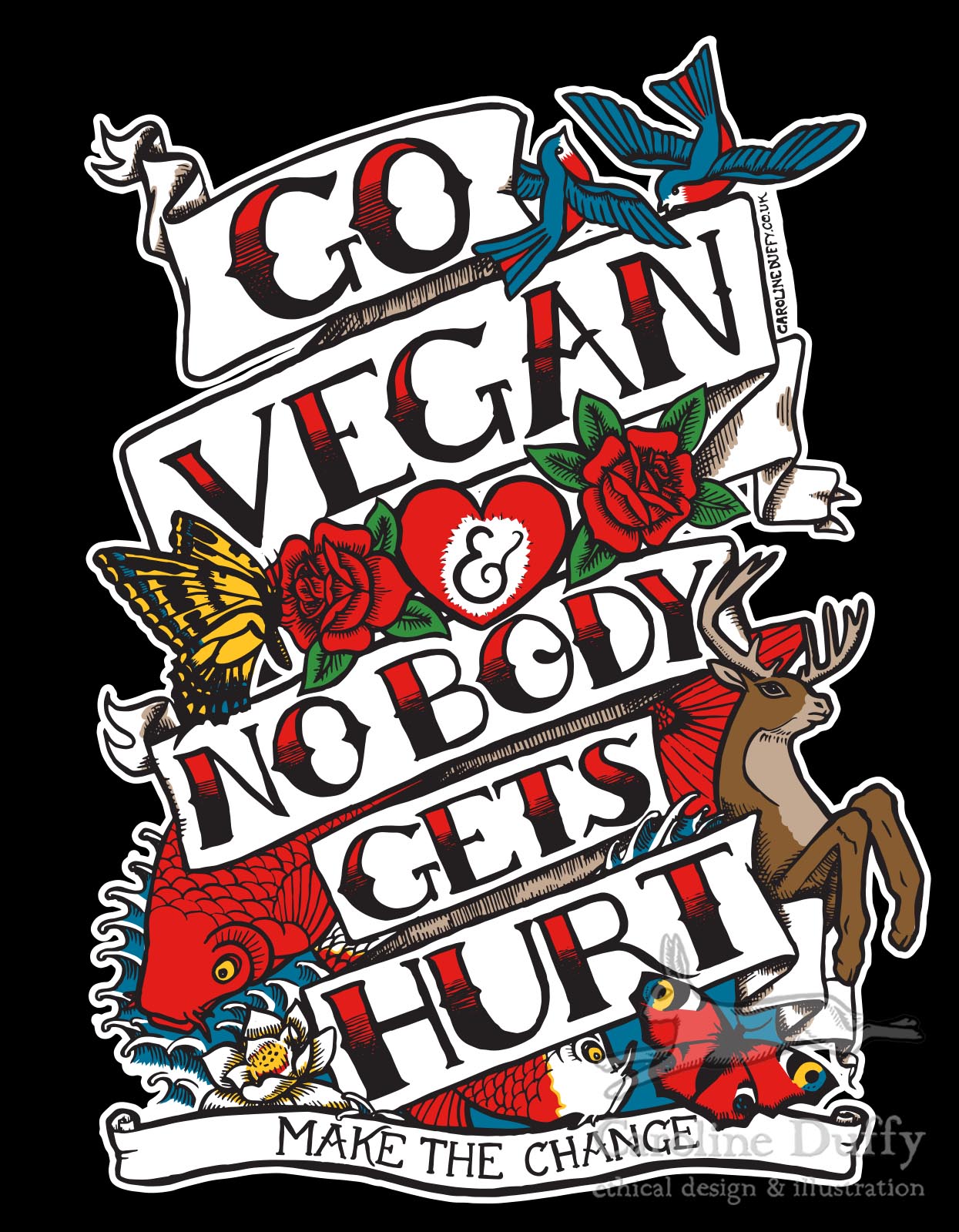
then there was this guide, Top Tips for Working with Trans People for TransBareAll

and I also did this illustration for CIO Connect magazine a while back which is probably the first time I tried it.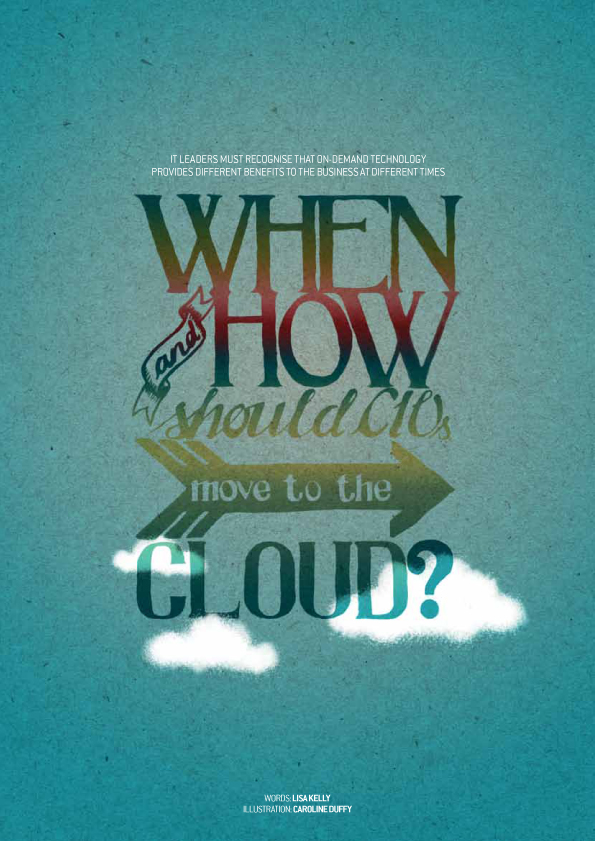
1) Go with the flow
So anyways, first thing first is getting your hand flow right – the way you hold your hand and the way your arm moves across the page. Here is someone who goes by the name of Cream5 on YouTube and I like him because he has a very sexy voice and occasionally swears. But possibly more importantly than these things is that he convinced me to go back to basics with some really simple shapes and to concentrate on getting more flow into my work.
2) Write letters
The next step once you’ve got your drawing hand all limber is to practise your lettering skills. Here is a guy just messing around with a brush pen and he just makes it look so easy. It’s soundtracked by Radiohead’s song Daily Mail which is somewhat discombobulating but hey, go with it.
3) Lettering how-to
If you’re new to hand brush lettering then it is totally worth watching some videos featuring Glen Weisgerber. He looks amazing – like he was a roadie for Frank Zappa – and he paints exquisitely. I guarantee that watching this video will make you at least 15% more masculine.
4) Lay it all out
The next step is to work on the layout. This is a good video by someone called MadeByMarzipan. I’m not the greatest fan of her style and the music is so twee it makes a vintage photo of a pug wearing a sailor suit look like something by H R Giger. But she’s got a good way of explaining how she comes up with the layout of her pieces so it is totally worth a look.
5) Preparation is everything
In this short video – not exactly a tutorial but useful still – we can see all of the intricate guidelines and preparation that Christoph Mueller lays down before inking his spectacular work. The amount of prep you do is entirely personal and also will depend on the style of lettering you’re using – have to confess I don’t know if I’d have the patience for this but my it is beautiful.
6) Take a tablet
Here’s a great video by Laura Coyle about hand-lettering directly into Adobe Illustrator using a Wacom tablet. I don’t know if it’s a way I’d ever want to work – I just love drawing by hand too much – but I might give it a go seeing how quick it is.
7) Be a goddamn genius
Hand-inking, tracing, scanning, photoshopping, jaw-dropping. This is the level of skill and dedication we’re aiming for, my good people.
So anyway, those are the vids I liked the best. Hope you enjoyed them as much as I did.
by Frank | Jun 18, 2014 | ethics, thoughts
or, why ethics and design must go hand-in-hand if we aren’t all to score a massive own goal
Disclaimer: I’m pretty sure that everyone who knows me knows that I am not a watcher of most sport, especially football. This is mostly because of its ubiquity; the behaviour of some Cardiff City fans on match days in my locale also comes into consideration. That is not to say that I have not enjoyed a match on occasion, and the edited highlights of football games that my ex would watch on Match of the Day were tolerable and sometimes funny. However if he dragged me out to experience a whole Ireland international I would spend most of the time split between watching the condensation on my pint glass gather into droplets and stumble down to the coaster, and wishing everyone bibbling around on that stupid grassy rectangle would suffer from sudden acute narcolepsy, thus ending my suffering.
TL;DR: I find it for the most part very dull.
Nevertheless I am aware that a lot of people are very excited about the World Cup, and some of these people are my friends. And this upsets me – whether it should or not, who knows. But here is a little piece about *why* this upsets me and what design has to do with this.
Brazilians aren’t in favour of it.
It’s a thing that many Brazilians asked that we did not attend the World Cup – citing corruption by the Brazilian government and FiFA and summary executions and revenge killings OF CHILDREN in the favelas by state police as some of their reasons.
Fifa is awful awful AWFUL
It is also a thing that FIFA is a horrible monstrous beast exploiting people’s love of the “beautiful” game, and that conservative estimates state that 4,000 SLAVE LABOURERS WILL DIE in the building of the stadiums of 2022’s World Cup host, Qatar.
Now, I am a person who is for the most part pretty careful about the things they buy. I like to give money to nice fluffy organisations who look after their workers and the planet (Fairphone) and begrudge giving it to organisations who, shall we say, do not appear to prioritise these things (Apple). I boycott a lot of corporations – Nestlé, Asda, Tesco, Esso, BP, Coca-Cola, McDonalds, the meat and dairy industries, etc etc., because putting my hard-earned cashmoney into the bulging moneysacks of companies who do things that are contrary to my values seems silly.
Watching events sponsored by said companies – especially when all of the sponsors AND the organising body AND the local government have joined together in an unholy trinity of überbastardness to see who can be the most Dr Evil seems positively jawdroppingly discombobulatingly WTF.
Which is why I did not watch the London 2012 Olympics.
But of course, we’re conditioned to only care about entertainment and the immediate gratification of our desires. Who cares where those little plastic microbeads end up after we exfoliate our skin, or what happens to our watercourses after we flush bleach down the loo?
We are also told that we are just tiny little insignificant protozoa in the great Ocean of Capitalism and that nothing we do could possibly make a blind bit of difference to what the great white sharks are doing.
Well, no. Firstly because boycotts and protests work. They worked against Barclays Bank during Apartheid South Africa, they worked against Marks and Spencer who were selling intensively-reared duck meat and they have worked against Lego responded to complaints about their stupid gendered toys by bringing out a range about female scientists.
And even Apple seem to be improving their workers’ conditions.
And secondly, why would you want to partake in something where people, ACTUAL HUMANS, have been enslaved or murdered as part of the process of bringing that something to you? I just don’t get it. But then I don’t really get the point of football either, so perhaps I’m not the one to talk about this.
Moving swiftly on to something which I am a bit more qualified to talk about: so what has this little rant have to do with design, being that that word was in the subheading at the top of this?
Design is a process.
It is a process of working out what is required and then considering the most effective way of manifesting that thing. The thing at the end of said process could be anything from a brochure to an international football tournament. And every part of that process can affect the lives of all sorts of people whom you will most likely never meet and yet who live, just as you do, working to pay the rent, put food in the mouths of their families, pay for an education and to ensure that they have access to healthcare.
That process (take a brochure, for example) can also involve the cutting down of virgin forest in developing countries, or not, the use of ozone-depleting Volatile Organic Compounds, or not, and the mining and disposal of heavy metals, or not.
Design decisions matter.
This is why the decisions made at every part of this design process should be evaluated not just on what they will do for you and your organisation, but what effect they will have on the everyone – and everything – else. It’s not enough any more to not actively be an Evil Bastard – we need to check that everyone involved also has no predilection for Evil Bastardness either. Preferably, the people who are helping us Manifest our Thing are pretty much against Evil Bastardness and go out of their way, in words AND actions, to replace it with Utter Loveliness.
A wonderful example of where I think we could aim is this mission statement by clothing company Continental. I actually had a little cry when I read it. Imagine if every corporation had designed these values into everything that they did? Seriously, just take a minute and imagine that. Imagine the impact that would have on every aspect of our lives.
Imagine what THEIR World Cup would look like.
FIFA, on the other hand, seem to have designed corruption and avarice into the process of setting up their tournament. Impressively diverse ways of getting money out of the taxpayer, away from schools and hospitals and in to FIFA’s $1billion of reserves have been utilised. You’ve really got to hand it to them.
Let’s shout OFFSIDE* at them, take them as an example of how not to do things, and design a more egalitarian, co-operative world for everyone.
*I actually do understand the offside rule in football. No, I don’t know how or why either.
by Frank | Jun 16, 2014 | thoughts, Uncategorized
how to not be *that* client and how to work with one if you have one
A lot of people like to laugh at stupid things other people’s clients say, for example, there are oft-shared hilarious experiences like this, this popular website and there is this series of posters created by an Irish graphic design studio.
Although I take a bit of a guilty pleasure in smirking to myself about such things, being that I have been known to exhibit teeny tiny signs of misanthropy, I also think that placing all the blame on the clients for these atrocities is often like blaming a badly-behaved dog for its actions – really, you need to be pointing your Finger Of Judgment at the people who have influenced that dog. Or client.
No one is born knowing how to write a brief or give feedback. Thus, us creative types need to hold our clients’ hands along the dark and twisting forest path of Lovely Design Making so that they end up at the Beautiful Gingerbread House of Successful Project Completion and not the Terrifying Skull-Bedecked Baba Yaga* House On Chicken Legs of Design That Really Doesn’t Work For Anyone At All.

Baba Yaga’s hut taken from https://geoffmead.wordpress.com/2012/06/
So, here are some problems that I have encountered along the way – mostly in just the one nightmarish client – and what I’d recommend doing to overcome them whether you’re the designer or the customer. I may well be teaching many of my grandmothers to suck eggs here – I prostrate myself at the feet of those who Have Been Through This Curious Hell Already.
1) Refusal to give any kind of coherent brief
“I want a logo with a dancing girl on it and I’m sending you a CD of the music the dancing girl would listen to and no you don’t need to know any more than that” “no, that one’s not right” “no, goddamn it, did you actually listen to the CD?”
Designers: does the client even know how to give a brief? Have you helped them do this? In this situation the graphic designer needs to ask a lot of questions, preferably by email, so that they are all written down and can be referred to later. I like to focus on finding out who the product is aimed at – what car would they drive, what hobbies and interests do they have, etc, and what kind of feeling the client wants to convey – happy, professional, sexy, competent, being chased by a bear etc.
I’m sure most designers do all this already; one thing I have found is that the more everyday you can make these questions the better clients’ imaginations will be fired up. Think those interminable Buzzfeed quizzes that everyone is doing on Facebook at the moment – “which Lord of the Rings character would your target customer be and why” will probably yield more useful information than “would you say that your selected demographic was in the ABC1s”.
(here is a funny youtube video to break up the text. I am not a LOTR fan FYI)

download this
For clients – well, handily, I have spent some time writing this “how to give briefs to graphic designers” guide which you may download for free. Hooray! Go me! In short, be as specific as you can. Think about the project in as much detail as possible, from the size and shape to the colours you do and do not like.
There might be a brand you see reflecting the things you want to espouse – Mercedes Benz or Innocent Drinks, for example. Give as much info as you can about how you want people to feel about the product.
Designers are usually intuitive lateral thinkers but they generally need more to go on than a CD of music that they have no connection with at all. If the music CD is a really big part of the brief then maybe you need to search around for a designer who’s really into bhangra or dancehall reggae or whatever it is that is on that magical shiny disc.
2) Daydreaming/being divorced from reality/having ambitions way beyond their budget
“I’m starting up this little business where I’ve bought a van and it makes coffee and I’m going to take the van to festivals and sell coffee there so I want a logo for the van and then also a set of business cards that look like tarot cards and I want the interior of my chain of coffee shops to look like a burlesque circus and and and…”
Suffice it to say that this client didn’t even have enough money to pay me for the logo I sweated blood** designing for her.

Newsflash: this shit costs money. Gif from https://gracefuldreamer.tumblr.com/
Designers: I have had the misfortune of working with two clients like this. They give you a list as long as your arm of all the wonderful things they want and then when you tell them the price they either accuse you of taking their dreams away or they pretend not to hear and then mysteriously run out of cash just as you’re finalising the logo.
If I had my time again I probably would have turned and run a mile from the client who told me that she had already been through twelve (TWELVE) graphic designers who just couldn’t get what she wanted and also she had £10,000 of debt and was struggling to pay her mortgage. I’m not entirely stupid – I can read warning signs – I’m just an incurable optimist. Now I’ve learned to look for the signs that a client is lying to themselves. Also, I ask for 50% up front with new clients, or payments in stages, and we don’t progress to the next stage until the previous one is paid for.
Clients: if you’re in this position you’re probably a start up – likely you’ve never briefed a designer before and have no idea how much time websites take to design or about the cost of printing. I really do recommend that start-ups approach several designers and tell them what your carefully considered budget is, and then ask them what you can get for that money, perhaps involving different options.
This isn’t what clients normally do, but it will save you asking for quotes for a bunch of things so extravagant that they would make Liberace blush.

Liberace: rumoured to not be a fan of careful budgeting. Photo by Alan White.
Here’s an example of how this could work – you might be able to get a logo and website designed and some business cards printed for your budget, and for the same price you could get a logo and a thousand beautifully-printed brochures. Do the research, find out what your competition does, what your own customers expect, and decide that way. Be realistic, and be prepared to cough up at least part of the money upfront to the right creative sort.
3) Clients who won’t give feedback other than “I don’t like it”.
Oh dear baby jesus in the manger with the donkeys designers know that this is perhaps the most frustrating thing of all. First of all you must be really careful to ensure that the client knows they can be frank with you without causing offence. It’s good to let them know that you learn just as much about them from the things they *don’t* like as you do from the things they do; that negative feedback is a very important part of the creative process and that they need to be as clear as possible about how they feel.
However, if you’ve said all this and the client is stubborn and refuses to elaborate, again you need to get canny with your questioning. How does it make them feel? What about it would not connect with their customers? What character out of Lord of the Rings would it be (OMG I asked for Gandalf and you’ve given me Sam Gamgee)? If the client gets all extra stubborn and really won’t tell you why then maybe you have to call it a day. Stabbing in the dark is not in our job description.
Clients: mostly just read the above. And if your designer reacts really badly to frank and fair negative feedback then maybe you need to part ways. Us designers have a bad reputation for having creative temperaments: from what I’ve heard it’s not entirely undeserved, but I genuinely believe that most of us just want our clients to be happy.
Thus it’s a good idea way in advance to get a personal recommendation for a designer, read testimonials and talk to people who’ve worked with them, just to make sure you don’t get landed with the Gordon Ramsay of InDesign.
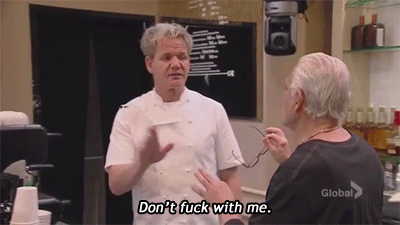
from https://crystaweenie.tumblr.com/
*no disrespect to Baba Yaga the All Powerful whatsoever
** did you know that you can actually sweat blood? I didn’t actually do that though – I am using hyperbole.
by Frank | Jun 6, 2014 | ethics
5 ways your business can become more sustainable at little or no cost to you
I’m assuming you’re already recycling and turning the lights off when you’re out and such because it is 2014 and these things are kind of automatic for most people now. So here are some extra ways in which you can make the planet and your pocket happy…
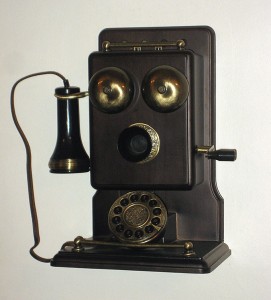
photo credit: sateda at freeimages.com
1) End of your mobile contract?
Phone still in good working order? Get a sim-only contract. Your phone contains heavy metals and minerals sourced through conflict, plus the people who made it probably didn’t have that much fun doing it. You’ll likely cut your mobile bill in half by doing this, and when your phone does start to conk out (mine is getting there at just over four years old) consider buying a Fairphone.
I saved: £240 a year
2) Switch your electricity supplier…
…to one that creates their power sustainably, and/or join a local energy co-op. Choose from Good Energy, Green Energy and Ecotricity. It means that you’re not funding nuclear or coal-fired power stations. You can compare prices easily on-line – you just need an old bill. Switching is painless these days too!
Cost me: £14 a month cheaper than the cheapest on Compare the Market – less than 50p a day to know I’m not investing in dirty energy.

3) Try having a vegan lunch once a week
We all know that animal farming produces more greenhouse gases than all transport methods combined, so cutting out meat, dairy and eggs from our diet as much as we can bear to is a Good Thing. However, I am totally aware that the very idea of an animal-free diet can send dedicated meat-hounds into cold turkey (sorry). Once a week is doable though, is it not? A quick and tasty sandwich option could be humous, sun-dried tomatoes, salad leaves and basil, and lots of chain shops do things like three-bean salads if you need to grab something on the run. Cardiff is positively bursting at the seams with places you can get a vegan lunch – check out Eat Out Vegan Wales for places in your area, and the Happy Cow website for locations nationwide. There about three zillion recipe ideas on the internet and some of the best are on The Vegan Society’s site.
Cost: nothing more than what you’re paying already
4) Switch off things that are on stand-by at the end of the day
Apparently the average cost of leaving electrical goods on standby rather than switching them off at the wall is 9% to 16% of a household’s annual electricity bill. Being that offices tend to have more things plugged in to a smaller space, you can bet it’s an even bigger proportion of your business overheads.
I work out of a home office and I have two extension leads under my desk – one that stays on because it powers the land-line and router and such, and another that can be turned off at the end of the day once my computer is off – it powers things like the mac, the display, the printer and the external hard-drive. Simple!
Saving: £50+ a year

photo credit: porah at freeimages.com
5) City car club
If like me you work from home, you may not actually need a car. If you live in a city likely there’s a nippy little hatchback just around the corner that you can hire for a small hourly rate for when you need to get to meetings. And when you’re hiring a car you’re more likely to check out what the public transport options are, too.
Adding up insurance, vehicle excise duty, MOT, servicing and the occasional fix a thirteen-year-old VW T4 needs, the camper van costs me £100 a month plus fuel, so it’s a real luxury, and I justify its ownership by the fact that I don’t take foreign holidays and I can just bugger off whenever I want and pull up in the driveway of my friend’s smallholding in West Wales and wake to the sound of wood peckers and goldfinches and chiff-chaffs.
But surely, at a cost of £1200 a year, I could easily hire vans? or hire cars and just use a tent? It’s an emotional decision to keep hold of it – I converted it to a camper myself using reclaimed wood and it has a beautiful wood burner fitted which means it’s kind of my escape pod all year round… all I’m saying is, do the maths, find out how much your car actually costs you, look up where your nearest car club vehicle is and how much that would cost.
Maybe set yourself a challenge to see if you can go without your car for a month with an amazing reward if you succeed, like dinner at IMHO the best restaurant in Cardiff, Canteen on Clifton Street?
Other options are to share the costs and responsibilities of a car with neighbours or friends (Lancaster Cohousing project has this down to a tee), or even working out how much taxis would cost you for the journeys you need to make that you can’t do by public transport. Likely that if you don’t use your car that much it’ll still save you money.
Savings: your mileage may vary!
If you can think of any other simple things to add to this list I’d love to hear your suggestions! 🙂
 Newsletters – whether of the almost-dodo-like paper kind or the increasingly-popular email kind – are a great way of keeping in touch with your customers – potential or current. If you’re selling a high-value product or service they give people an opportunity to get to know you and your work before committing to buy, and you can share exclusive offers, and news about exciting new services, with people who are already interested in your stuff.
Newsletters – whether of the almost-dodo-like paper kind or the increasingly-popular email kind – are a great way of keeping in touch with your customers – potential or current. If you’re selling a high-value product or service they give people an opportunity to get to know you and your work before committing to buy, and you can share exclusive offers, and news about exciting new services, with people who are already interested in your stuff.












